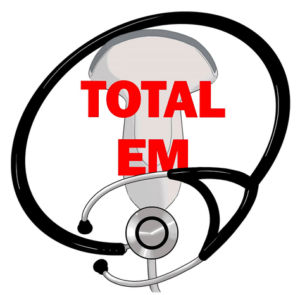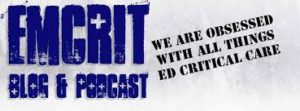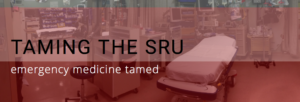Nursing FOAMed Review #7 (Nov 2nd – Nov 25th)
In a review on emDocs Lloyd Tannanbaum explains the physiologic causes of widening pulse pressures and bradycardia in Cushing’s Triad. So if you want a quick review of Cushing’s (i.e. why increasing CO2 leads to a MAP increase and the baroreceptor response) this is a great 5 minute read. The article’s main topic isn’t Cushing’s Triad though – it is the ECG changes that one can expect to see when dealing with a patient experiencing increased ICP. Tannenbaum sites an article that shows up to 56% of patients experiencing increased ICP will have a variety of ECG changes including ST depression, QT prolongation and T-Wave inversions. There is also mention of increased troponin – so how do we differentiate between MI and cerebral hemorrhage? The article continues to explain and dives into an explanation on “Cerebral T-Waves”. Great references at the end of the write up, with links to more articles and ECG samples on the Life in the Fast Lane FOAMed site.
Charles Murchison doesn’t want you to keep using Sodium Bicarbonate. In his review on emDocs he breaks down the evidence for Sodium Bicarbonate’s use in fighting acidosis – and systematically argues against the drug’s efficacy. The physiology review is so interesting, I can say that this has been my favorite FOAMed article read in the past couple of weeks. Some very cool pearls –
- Acidosis may not need as much correcting as we think – arguments (with peer reviewed reference obviously) for why acidosis my help the body in crisis states.
- A step by step chemistry and physiology process of how NaHCO3 “fixes” acidosis – and why your metabolic acidosis will convert to a respiratory acidosis if NaHCO3 does it’s job correctly. He argues that if you can’t ventilate off the extra acid, as is the case in a typical cardiac resuscitation, the NaHCO3 may be futile.
- A direct pull from the article: “50 mL or 50 meq of 8.4% sodium bicarbonate – will raise the Na by 1.0 meq and increase ECV by 250 mL”. Yikes right?
- A quick literature review discusses why there is so little evidence to support sodium bicarbonate’s use during cardiac arrest.
It looks like St. Emlyn’s is commenting on the giant body of evidence questioning the efficacy of neuro-protective hypothermia. Dr. Dan Horner writes in St. Emlyn’s about JAMA’s POLAR trial – and the results aren’t really all that surprising. Simply put, POLAR is a high quality RCT (N=511) that shows no real difference in outcomes for patients that underwent hypothermic protocols post TBI vs those that were not subjected to cooling. If you are interested in studies that show the efficacy (or non-efficacy) of hypothermic treatments, this is an interesting read. Advocates of hypothermia are found in trauma, cardiology, resuscitology, neurology and all different kinds of “ology” – but at the end of the day it seems like recommendations for these treatments are based more on bench concepts and less on actual practical results. I’ll continue to keep an eye on hypothermia RCTs for post cardiac arrest patients – but as long as AHA pushes hypothermic protocols for every comatose ROSC patient, I’m sure we will continue to see these studies produced. As long as these studies aren’t showing that hypothermia is causing harm, I don’t think that we will see a huge push to ditch hypothermia-based protocols, but is this really an effective treatment? We will have to keep an eye out for more literature and how it affects our future treatment guidelines.
Total EM podcast #120 is all about tics and tic borne illnesses. If you like infectious disease, this Total EM podcast is a fascinating half hour discussion between Dr. Chip Lang and Dr. Michelle Perkins. If you don’t have time to listen there is a great write up here.
- Doxycycline is the antibiotic of choice for the majority of these tic-transmitted infections.
- Doxycycline is safe for use in children – all the tooth staining contraindications we learning about are true for tetracycline – but doxycycline is in the clear.
- Lyme and all of its controversy – including cardiac manifestations for lyme, which are really interesting. (Trigger warning for those of us who rail against “chronic lyme”)
- A quick discussion about tic-borne infection diagnostic labs
- Really thorough photographic entomology review for tics
Of note for those that wish to do a bit more of a “deep dive” for some of the AHA PALS basics out there – Total EM podcast #121 is dedicated to the emergent treatment of croup. Some really great info in here concerning risk stratification, when and when not to use epi, and why not every croup case is solvable by humidified air. This one is definitely worth a listen as we move into the croup season.
Dr. Josh Farkas adds another chapter in the Internet Book of Critical Care with something that everyone is familiar with – Hyperkalemia. We’ve all seen enough of these patients to know how serious they can be. But if you have worked in 5 different critical care areas, you have probably seen about 25 different ways to treat this potentially life threatening electrolyte imbalance. Listen to the 20 minute podcast for a great rundown of the IBCC chapter.
- EKG changes – what to expect and what NOT to expect. Why EKGs can help our prognostic/diagnostic outlook, but why we need a more holistic approach.
- Pseudo Hyper K / Iatrogenic (Including Heparin!) / extracellular acidosis DKA or HHS / cellular lysis / renal failure / RAS dysfunction
- a quick conversion about risk analysis for your hyperkalemia patients.
- Why kayexalate probably has no place in emergency care of hyperkalemia
- Why our NS vs LR dogma is harming our patients! Put the NS away and grab LR (or maybe isotonic bicarb drips!).
Dr Emily Roblee writes for Taming the SRU about preeclampsia in the ED. Any nurse who sits at triage will want to read this article from beginning to end. As Dr Roblee points out, preeclampsia is a “can’t miss” emergency – if we don’t catch preeclampsia we could contribute to significant increases in the patient’s mortality/morbidity. There are some really fantastic PDFs in this article that do a wonderful job of graphically simplifying the information presented. Among the pearls in this article –
- Wonderful breakdown of symptoms that should make us suspicious of preeclampsia at the triage station. It’s not all about the BP.
- A quick guide to differentiating between chronic hypertension of pregnancy: , gestational hypertension, preeclampsia and actual eclampsia
- A quick discussion about HELLP
- Lab work and a breakdown of the evidence behind the risk factors as shown on our lab results.





